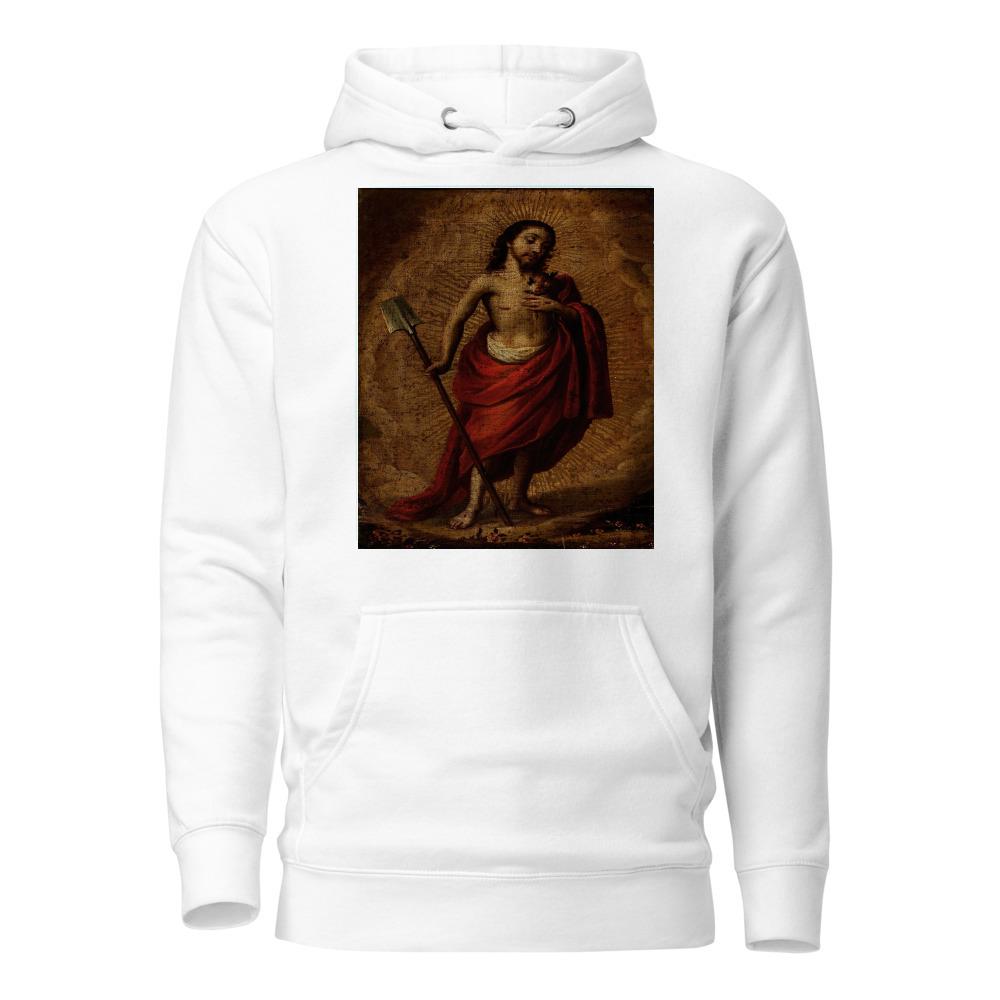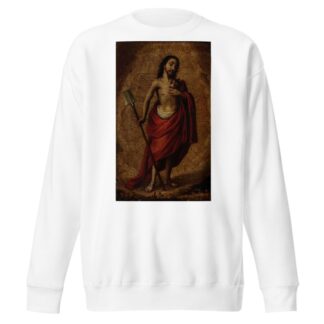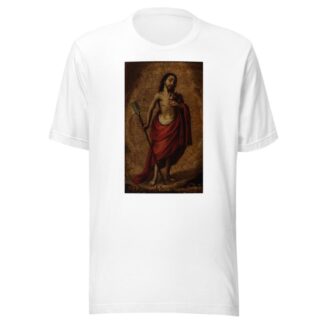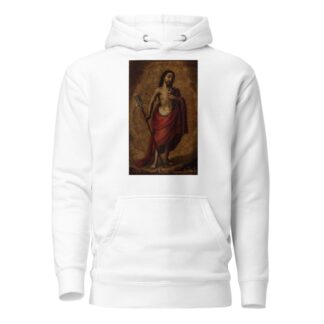Description
Portrait of Christ by Cristóbal De Villalpando printed on a Hoodie
About the Hoodie
Modern fit
It provides a more tailored look than a regular fit
Comfortable
The fabric and fit of this item are extra comfy
Tear-away tag
Easily removable tear-away tag that allows you to add a custom inside label
Premium quality
The product is made from premium, high-quality materials
Classic unisex hoodie with a front pouch pocket and matching flat drawstrings. The 100% cotton exterior makes this hoodie soft to the touch.
- 65% ring-spun cotton, 35% polyester
- Charcoal Heather is 60% ring-spun cotton, 40% polyester
- Carbon Grey is 55% ring-spun cotton, 45% polyester
- 100% cotton face
- Fabric weight: 8.5 oz./yd.² (288.2 g/m²)
- Front pouch pocket
- Self-fabric patch on the back
- Matching flat drawstrings
- 3-panel hood
- Tear-away tag
Cristóbal De Villalpando (ca. 1649–1714)
Cristóbal de Villalpando was a Baroque Criollo artist from New Spain, arts administrator and captain of the guard. He painted prolifically and produced many Baroque works now displayed in several Mexican cathedrals, including the cathedrals in Querétaro and Mexico City, as well as a depiction of the Zócalo (main square) in Mexico City, showing the damage of the 1692 riot to the viceregal palace three years earlier.
Born in Mexico City to the influential Villalpando family, Cristóbal assumed duties in the local militia as an ensign, as well as painting with Baltasar de Echave Rioja (Echave the Younger) in the Echave workshop. In 1669, he married María de Mendoza and they had four children. He received several religious art commissions, both in Mexico City and in Puebla. Other paintings by his hand are found in the sacristy of the Mexico City Cathedral.
Villalpando rose to the rank of captain and served several times as director (veedor) of the painters’ guild.
Villalpando included a self-portrait in his Apparition of Saint Michael on Mount Gargano in the sacristy of the Mexico City cathedral. His portrait is nested among the clergy at the bottom right.
Villapando died in Mexico City in 1714 and was buried there.
Villalpando’s early works attest to the influence of Peter Paul Rubens; however, as his style continued to develop, he moved away from the extremes of vivid coloring and excessive robustness to a more measured style, using a broad palette and incorporating more of the New World painting traditions. In his later work he moved away from uniform luminosity, employing greater contrast and placing artificial light sources within his paintings to add a touch of drama. His work was much emulated.
Villalpando tailored his style to the nature of the work and to its patron. He employed rough blots and smudges to good effect, but used meticulous brushstrokes when required.






Reviews
There are no reviews yet.